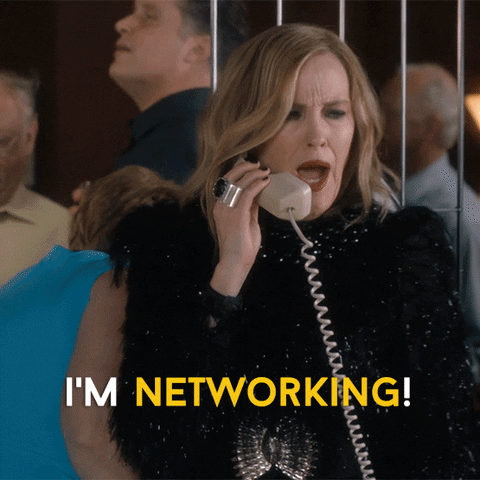Professional networking isn’t what it used to be, especially when you work from home or in a coffee shop. Remote work is changing the way we interact, but it’s no excuse to hide behind your computer.
Virtual networking is a fancy term for building connections with your professional peers via online channels, and it’s just as important and valuable as any conference or live networking event you might attend.
Plus, there are some major bonuses when you remove time and space from the equation. Building connections with strangers can be nerve-wracking, but you can take confidence from crafting a solid online presence. The key is to make a lasting impression the right way.
Inspired by professional etiquette best practices, here’s how to put yourself out into the online world of networking, craft your professional profile, and find the right people to help you build your career.
Find The Right Virtual Connections
When you attend a networking event in person, it’s best to find someone who can help you work the room. You won’t want to wander around aimlessly, and the same is true of virtual networking. When the internet is your oyster, it’s easier to find the right people because you’re not limited by location, but you want to narrow your search to network on the right channels.
With the opportunity to connect with literally anyone in the world, you need to be laser-focused. Figure out where and how your industry’s thought leaders and influencers choose to interact with each other. A good way to do this is to search for keywords and hashtags on Twitter related to your field.
You can also use tools like BuzzSumo to find the tweeters, bloggers, and authors who are reaching the most people online about various topics. A tool like LinkedIn Sales Navigator can help you find and connect with people outside of your immediate network.
Convey Your Passions
Chances are that the person or group you’re trying to connect with has a lot of other people who are trying to get on their radar as well. When it comes to building a memorable online presence, authenticity and originality matter.
You can start by saying something that other people aren’t saying. Sometimes that just means asking them how you can be helpful (more about that next), and sometimes it means showing who you really are and why you’re different. If people can see your passion and interest, then it makes all the difference.

John Jantsch of Duct Tape Marketing suggests that you think like a marketer. Evaluate the copy you use in your LinkedIn profile and make sure it truly grabs your audience’s attention.
Not feeling confident about your creative skills? Reach out to your network and ask for their feedback. Showing some vulnerability and asking for advice can lead to unexpected conversations and connections..
Heap On The Generosity
Once you figure out who the right people are and you have something unique to share, plan to help them out. Gary Vaynerchuk, the author of Jab Jab Right Hook, explains the value of engaging with people, telling stories, providing value to them, and only asking for something after doing all of those things.
You have a clear idea of what you’d like to get from networking, so it will be tempting to start the relationship with a tiny bit of give, and then a lot of take.
It’s even easier to do this online because it’s less awkward to promote yourself or ask for something big when you don’t have to do it to someone’s face. The worst thing you can do is immediately start the relationship by trying to sell them on something. Whether you’re posting in an online community (like the Trello Collection on the Atlassian Community) or reaching out to a specific individual, leading with the pitch won’t make for a lasting relationship.
Part of being generous is not rushing your network.
Make sure your connections know that you look up to them and you aren’t just looking for something in return. Tell them why you’re interested in them. Maybe they’ve provided really valuable content that has changed your life or helped you grow your business. Maybe they said something really funny on Twitter that stuck with you. First and foremost, tell them you love what they’re doing.
Remember that relationships aren’t born overnight.
Alexis Reale, writer at FlexJobs states:
“Networking takes time and requires a relationship to develop. As you continue to build your relationship, you can dive into more details about your professional relationship and potential jobs, but jumping in with both feet and asking outright for a job will only hurt your chances of success.”
Giving is as easy as engaging in a conversation, and it can be as simple as a retweet on Twitter or a recommendation on LinkedIn. Share valuable and relevant content in your social media communities. Be intentional about publicly supporting companies and brands you believe in. If someone asks for help or a recommendation in your professional field, engage with them. Even if you don’t have the immediate answer, help facilitate however you can.
Above all, if you enter a relationship only thinking, “What can I get out of this?” it’s doomed for failure from the start.
Be An Authentic Avatar

If you’re only talking to someone to try to get on their “good side,” that will show. The key is authenticity. Only connect with people you genuinely want to have a relationship with and you’ll find it working for the best.
When you do ask them for something, whether it’s a “win-win” opportunity, or actually a favor, don’t hint at it. Just ask it. Be clear. Tell them you’re not afraid of a “no” and then be clear about what you really want. Otherwise, you might set yourself and the other person up for confusion.
Be clear about what you’re asking for and the expected outcome. Sarah Faulker of the Success blog recommends stating specifically what you are looking for, and never asking for something generic like “picking your brain.”
You can’t force an authentic relationship. If you keep trying to connect with someone and there’s no response, try another channel.
Still doesn’t work? See if you can get a mutual friend to connect you.
Still no response? Don’t bother them. Give it a few months. That person might be in a really busy season of life. Or maybe they aren’t looking for any new connections.
Either way, you’re potentially going to come off as pushy or, potentially worse, a bad listener. To use a dating analogy, you wouldn’t keep asking a person out if they said no multiple times.
Don’t Make It A Virtual Headache
At the end of the day, virtual networking is not altogether different from actual networking. In fact, if you’re less than comfortable with physical meet-and-greets, building your network online can be a real confidence booster.
The basics are the same: Surround yourself with people who inspire you, and offer some value in return. Hey, you may even make a friend or two while you do it.
Virtual networking doesn’t have to be painful, fancy, or even complicated. In fact, if you’re having a lot of fun while doing it, then you’re probably doing it right. By being intentional about making online connections, you can help to build your business, online brand, or just make that remote job feel less disconnected.
Editor’s Note: This article was originally published in March 2017 and we’ve added a whole heap of new ideas and nuggets of information to this post in June 2020.
Next: How To Set Strong Work-Life Boundaries As A Remote Worker





 )
) 




































